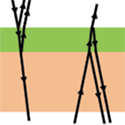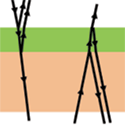Fundamental constants from topological insulators
Some of the most precise measurements of fundamental constants in nature come from topological phenomena in condensed matter physics. The measurement of the flux quantum using the Josephson effect, and the quantum of conductance from the quantum Hall effect, both provide the most precise value for the Planck’s constant . Recently, a new electronic state of matter, the time-reversal invariant topological insulator, which shows metallic conduction on the surface and insulating behavior in the bulk, was predicted to exhibit a quantized magnetoelectric response. If measured, this would be the first topological quantization phenomenon involving the fine structure constant .
In an article appearing in Physical Review Letters, Joseph Maciejko and collaborators from Stanford University, in collaboration with SLAC, Microsoft Research, and the University of Maryland, all in the US, propose an optical experiment to measure this. The setup consists of a layer of a generic topological insulator deposited on an ordinary insulator, in a perpendicular external magnetic field. They find that measuring the rotation of light polarization reflected off the top surface (Kerr angle) and transmitted through the two layers (Faraday angle) allows one to extract the quantized magnetoelectric response. If this measurement could be realized, topological phenomena in condensed matter physics could be used to nail down the most precise values for three basic physical constants: the fundamental electric charge , Planck’s constant , and the speed of light . – Sarma Kancharla





